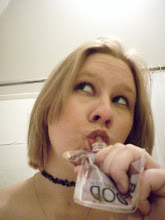Merry meet and welcome back!
We're talking herbs here. Not that kind of herb, but you get the idea. Herbs and their magickal properties.
A
Acacia : Protection, Psychic Powers, Money and Love Spells
Adam & Eve Roots : Love, Happiness
Adders Tongue : Healing
African Violet : Spirituality, Protection
Agaric : Fertility
Agrimony : Protection, Sleep
Ague Root : Protection
Alfalfa : Prosperity, Anti-Hunger, Money
Alkanet : Purification, Prosperity
Allspice : Money, Luck, Healing
Almond : Money, Prosperity, Wisdom
Aloe : Protection, Luck
Aloes, Wood : Love, Spirituality
Althea : Protection, Psychic Powers
Alyssum : Protection, Moderating Anger
Amaranth : Healing Heartbreak, Protection, Invisibility,
Anemone : Health, Protection, Healing
Angelica : Exorcism, Protection, Healing, Visions
Anise : Protection, Purification, Youth
Apple : Love, Healing, Garden Magic, Immortality
Apricot : Love
Arabic Gum : Spirituality, Purify Negativity and Evil
Arbutus : Exorcism, Protection
Asafoetida : Exorcism, Purification, Protection
Ash : Protection, Prosperity, Sea Rituals, Health
Aspen : Eloquence, Anti-Theft
Aster : Love
Avens : Exorcism, Purification, Love
Avocado : Love, Lust, Beauty
Blessed be!
Brinley Fallon
